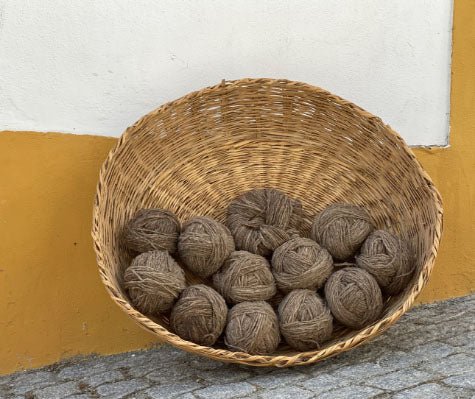So That’s How It’s Done
The Artistry of Basketry
A single artisan. Hours and hours (and hours) of craftsmanship. How an African pastime unites a continent.

Kazi
Kazi





The raw materials used can be as varied as the shapes and colors of the finished product. But the one thing that binds together the age-old craft of African basket weaving is the meticulous attention to detail that each basket receives from its skilled artisan. It is an artform practiced from Senagal to Ghana, Zimbabe to Kenya. So, the next time you reach for one of these beauties, here’s how to get a better handle on how it was made.
A handwoven basket always starts with…what, exactly?
Typically, a variety of grasses or plants. Sisal, elephant grass, millet, cane and veta vera are just a few of the materials used by weavers that you’ll find on PBP.
And it’s usually an all-natural process.
Hadithi Crafts
So, what’s the next step?
It’s a lot of work; sometimes it takes two.
In most basket-weaving communities, a single, expert weaver crafts a basket from start to finish. But sometimes, they need a hand. As explained by Dominic Abakuri from Ghana's
Kazi
How much work, you ask?
Collaborative Craft Project’s
striking, gourd-shaped buhera baskets—woven from a sturdy cane—can take 10 to 15 days apiece. The team at
Mbare
conducted a study of its artisans in Kenya, who weave traditional, lidded hamper baskets from millet grass and recycled plastic. Here’s how long it takes for a weaver to create a single basket:
Small basket—14.5 hours.
Medium basket—17 hours.
Large basket—18.5 hours.
Mbare
No matter the color, shape or weave, it always starts at the bottom.
Weavers begin their process from the base. “Weaving starts from the base where about 5 to 6 pieces of thick ropes /straw are placed across each other from the middle and held together with another rope. These are referred to as the poles,” explains Abakuri from Savannah Baskets. "The poles are the more or less the ribs of the basket, and the weaving is done with another piece of straw that is used to pass over and under the poles, encaging poles in- between. The weaver keeps adding more poles along to increase the width of the baskets. The body of the basket is then built up to the desired height where it is finished with a coiled rim or flat rim."
The finished product is worth the effort.
Basket making provides consistent and sustainable employment, especially in areas like northern Senegal, where it’s a thriving industry. Artisans are paid for each basket they produce and they are reimbursed for the cost of materials. "What’s great is that it's a female-dominated industry where there is not a lot of economic activity—most of what goes on in northern Senegal is subsistent farming because of the arid climate," says Robbie Stewart of Mbare. "So it puts a lot of economic power in the hands of women in rural Senegal."
Hadithi Crafts
Grasses, once stripped and dried, are often dyed in pots of boiling water over an open fire, whether for the boldly-colored Bolga baskets from Ghana, like those made by Big Blue Moma, or the more pastel-striped baskets from Hadithi in Kenya.
Oh, yeah, what about color?
